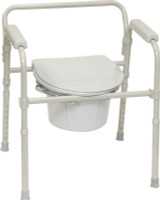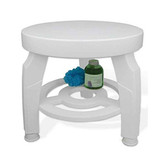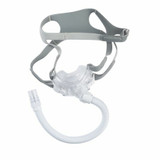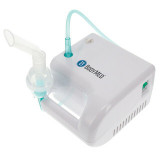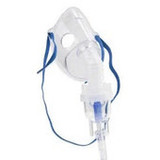
The Caregiver Guide - Patient Communication; What You Don't Hear
The role of a caregiver is one that demands compassion, responsibility and sacrifice. Since most caregivers, approximately 85% according to a Family Caregiver Alliance publication, are family members, we assume they strive to provide the best they’re capable of. The level of care, however, depends on several factors, some of which the caregiver can’t control.
One of these unique challenges, a relatively common one, is patient communication. Patients often don’t share their needs, concerns, or symptoms with their caregivers. This shackles the caregiver to some extent and makes it difficult for them to provide appropriate care. This article discusses why patients may not communicate fully and some strategies for caregivers to overcome this hurdle.
Silent Symptoms: Common Challenges Left Uncommunicated
Patients often keep pain and discomfort to themselves, not wanting to burden their caregivers. Be observant and proactive in recognizing signs of pain and discomfort, such as changes in facial expressions, restlessness, or decreased appetite.
Memory lapses and cognitive decline frustrate patients, but they often keep these struggles hidden. Be patient and understanding and try to find ways to assist them, like keeping a calendar or setting reminders for important tasks.
Everyday tasks become progressively more difficult but many patients will hesitate to ask for help. Look out for signs of difficulty in activities like getting dressed, bathing, or eating. Spotting these silent symptoms and providing appropriate compassion and assistance can make a big difference in a patient’s well-being and dignity.
Concealed Emotions: Overcoming Emotional Distress
The conditions that cause a person to require care almost always have a profound emotional impact on them. Patient communication is hampered because many find it challenging to articulate their feelings. Patients also experience fear and uncertainty over their condition or treatment but may not voice these concerns. Try to create a safe and non-judgmental environment where your patient can feel comfortable sharing their emotions and fears.
Feelings of loneliness and isolation are also very common, particularly in cases of cognitive decline or social withdrawal due to mobility impairment. As a caregiver, try to engage in meaningful conversations and activities with the patient. Also encourage social connections, such as inviting friends or family for visits or joining social groups.
Unspoken Worries: Addressing Anxieties and Concerns
Many patients worry that caring for them may place a burden on the caregiver, but they seldom voice this concern. As a caregiver, reassure them that providing care is a choice made out of love and compassion. Remind them that their well-being is a top priority and their needs are not an inconvenience.
Financial worries are common and can weigh heavily on patients, but they may feel uncomfortable discussing them. As a caregiver, openly discuss these issues with your patient and offer support by researching resources or reaching out to organizations that provide financial aid for medical expenses.
Effective Patient Communication: Strategies for Open Dialogue
Listening attentively and showing empathy helps patients feel heard and understood. Maintain eye contact, nod to show understanding, and validate their emotions. Avoid interrupting or dismissing their concerns, as this can discourage open communication.
Create a supportive environment that encourages patients to ask questions and express their concerns freely. Let them know that their opinions and input are valuable. Offer reassurance that no question is silly or irrelevant. Patients are more likely to communicate openly when they feel their thoughts and concerns are respected.
Non-verbal cues are powerful tools for effective communication. Use gentle touches, smiles, and comforting gestures to convey compassion and support. Pay attention to the patient's body language, as it can provide insights into their emotions and comfort level. Be mindful of your own non-verbal cues, as well, to ensure clear and empathetic communication.
Physical Well-Being: Managing Physical Discomfort
Patients may be unwilling or unable to show their physical discomfort. Sleep disturbances and fatigue are common issues among older patients. Be on the lookout for signs of exhaustion and sleep disruptions, such as constant yawning, difficulty staying awake, or complaints of feeling tired even after a full night's rest.
Nutrition is a critical focus area among care patients as the risk of malnutrition is much higher. Patients won’t always express their lack of appetite or challenges like chewing or swallowing difficulty. Keep an eye open for changes in eating habits and signs of unexplained weight loss. For more detailed tips on nutrition management for older adults, click here.
Nobody likes complaining about pain, but that doesn't mean your patient isn't silently suffering. Be proactive and ask your patient whether they have any pain or discomfort. Explore pain management options together and read this article for tips on coping with chronic pain.
Knowledge is Power: Educate Patients about their conditions and treatments
Educating your patient about their condition and treatment options empowers them to actively participate in their own care. By understanding their condition, they can make informed decisions, ask relevant questions, and play an active role in their recovery journey.
Self-care isn't selfish; it's necessary. Encourage your patient to prioritize their well-being through proper nutrition, exercise, and relaxation techniques. Additionally, empower them to become their own advocate by teaching them to voice their concerns and ask for the assistance they need. When patients take ownership of their health, it leads to better outcomes and a sense of control in their own lives.
Laughter is the Best Medicine: Harnessing Humor
They say laughter is contagious, so why not spread some joy while caregiving? Humor can be a powerful tool to build connections and create a positive atmosphere. Find ways to inject laughter into your interactions with your patient, whether through silly jokes, funny stories, or playful banter. Laughter can strengthen your bond and bring about some much-needed fun.
While humor can be a powerful tool, it's essential to gauge the appropriateness of each situation. Be mindful of your patient's emotional state and know when to tread lightly. Some moments may call for a gentle touch and empathy rather than humor. Pay attention to their cues and adapt your approach accordingly. Laughter should always be a source of comfort, not discomfort.
Conclusion
Adjusting to the role of caregiver involves developing keen observation and listening skills to recognize that a patient's experience is sometimes more than what meets the eye. At LL Medico, we understand the heavy burden of responsibility this places on caregivers. For over 25 years, we have supported caregivers with a wide range of top-quality products at highly competitive prices.
With our Autoship feature, you can schedule delivery of all your incontinence products, home and bath supplies, adult diapers and much more at set intervals to ensure that you always have everything you need. Let us take away the worry of managing your supply cabinet. Call us today at (855) 422-4556 or email us at [email protected].












































































